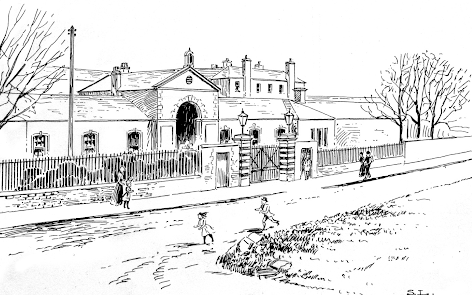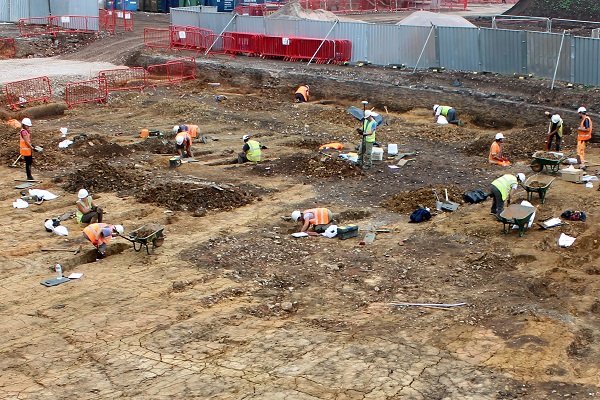ARCHAEOLOGISTS who excavated the site of one of Fishponds’ most historic – and notorious – institutions say they have made some “extraordinary discoveries”.
The work carried out over a five-year period, from 2018 until last year, uncovered a reported 4,500 bodies buried at Blackberry Hill Hospital, off Manor Road.
The remains date from the site’s 18th and 19th century past, as Stapleton Prison and then Stapleton Workhouse, described by the archaeologists as a “dark chapter in Bristol’s social history”.
The area which was excavated was from the part of Blackberry Hill Hospital which closed in 2007, before being redeveloped into housing around Quarterbridge Road, Napoleon Avenue and Chapel Road.
As a condition of its planning permission, developer Vistry Group paid for experts from Cotswold Archaeology to investigate the site, in consultation with the city council and Diocese of Bristol.
Prisoners of war
Writing on the Cotswold Archaeology website, engagement manager Rosanna Price said: “The site’s history is as complex as it is fascinating.
“It began as Stapleton Prison in the late 18th century, housing prisoners of war from Britain’s conflicts with France, Spain, Holland, and the United States.
“As the 19th century progressed, the site was transformed during Bristol’s 1832 cholera outbreak into a hospital, and later converted into the Stapleton Workhouse in 1837.”
Workhouse became a hospital, then housing
During the 20th century the workhouse closed and became a training centre for people with mental disabilities and illnesses, then Stapleton Hospital, which was renamed Manor Park Hospital and later Blackberry Hill Hospital, after a merger with neighbouring Glenside Hospital.
Some of the original prison and workhouse buildings were converted to become homes during the redevelopment, with new homes built on other areas of the site.
The excavation revealed remnants of historic structures and a “significant number of graves”, mainly of people buried in the workhouse cemetery between 1837 and the late 19th century, although the archaeologists believe some burials may be of inmates from the earlier prisoner of war camp.

Ms Price said: “The graves were uncovered with full respect for the site’s history, conducted under a burial licence from the Ministry of Justice and a faculty from the Diocese of Bristol.
“The story behind these burials reflects a dark chapter in Bristol’s social history.
“The workhouse served as a refuge for the city’s poor, offering shelter to those who had fallen on hard times. Many of the individuals buried here had faced extreme poverty and illness before their deaths.
“Examination of their remains, along with personal items found during excavation, helps archaeologists and historians piece together their life stories—highlighting the societal struggles of the era.”
Cotswold Archaeology says post-excavation work is ongoing, including scientific analysis of “selected remains” to understand more about people’s lives, health, and causes of death.
The possessions people were buried with are also being studied.
A full report of findings will be published in 2026, with a public engagement programme.
Remains reburied in ‘specially constructed vaults’
The company says most of the remains have already been reinterred on the site, in “specially constructed vaults”.
Ms Price said: “A memorial ceremony is planned to accompany the final reburials, ensuring that those who lived and died here are honoured.”
Diocese of Bristol secretary Richard Leaman said: “Whilst the site has existed historically as consecrated ground, the Diocese of Bristol does not own the building or the ground it sits on.
“In 2021, the Bishop of Bristol agreed that the consecrated ground would not be subject to the legal effects of consecration on the site.
“This was agreed on the condition that the removal and reinterment of human remains be carried out in a reverential and lawful manner, and that any remains were placed in a consecrated vault under prayerful interment, with a marker to bear witness to the new gravesite.”
The remaining, modern Blackberry Hill Hospital buildings, used today for mental health treatment and care, stand behind the housing development, next to UWE Bristol’s Glenside Campus.
Top picture: Cotswold Archaeology excavating in Blackberry Hill in 2020

